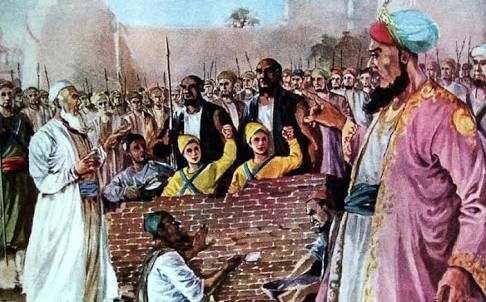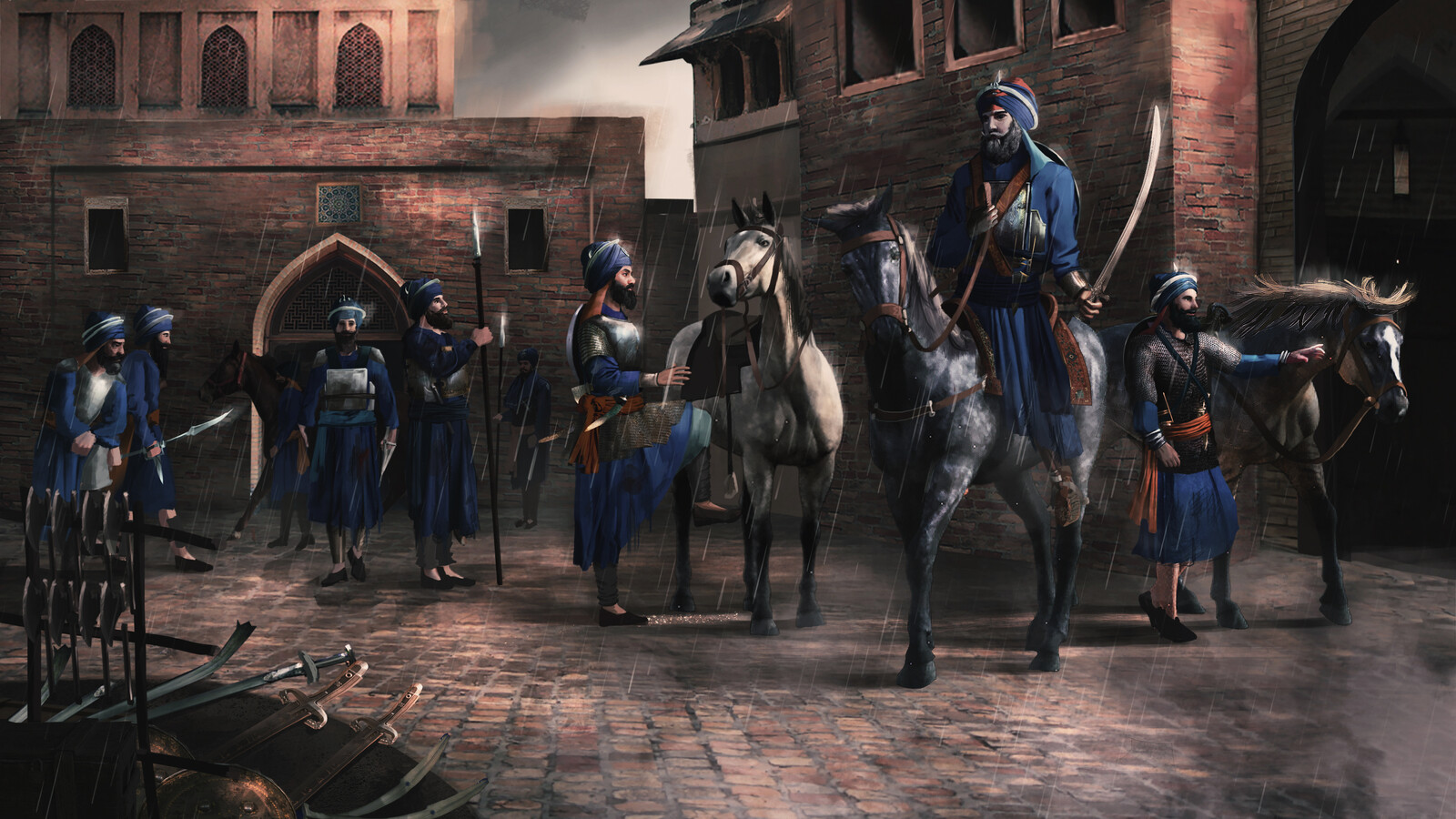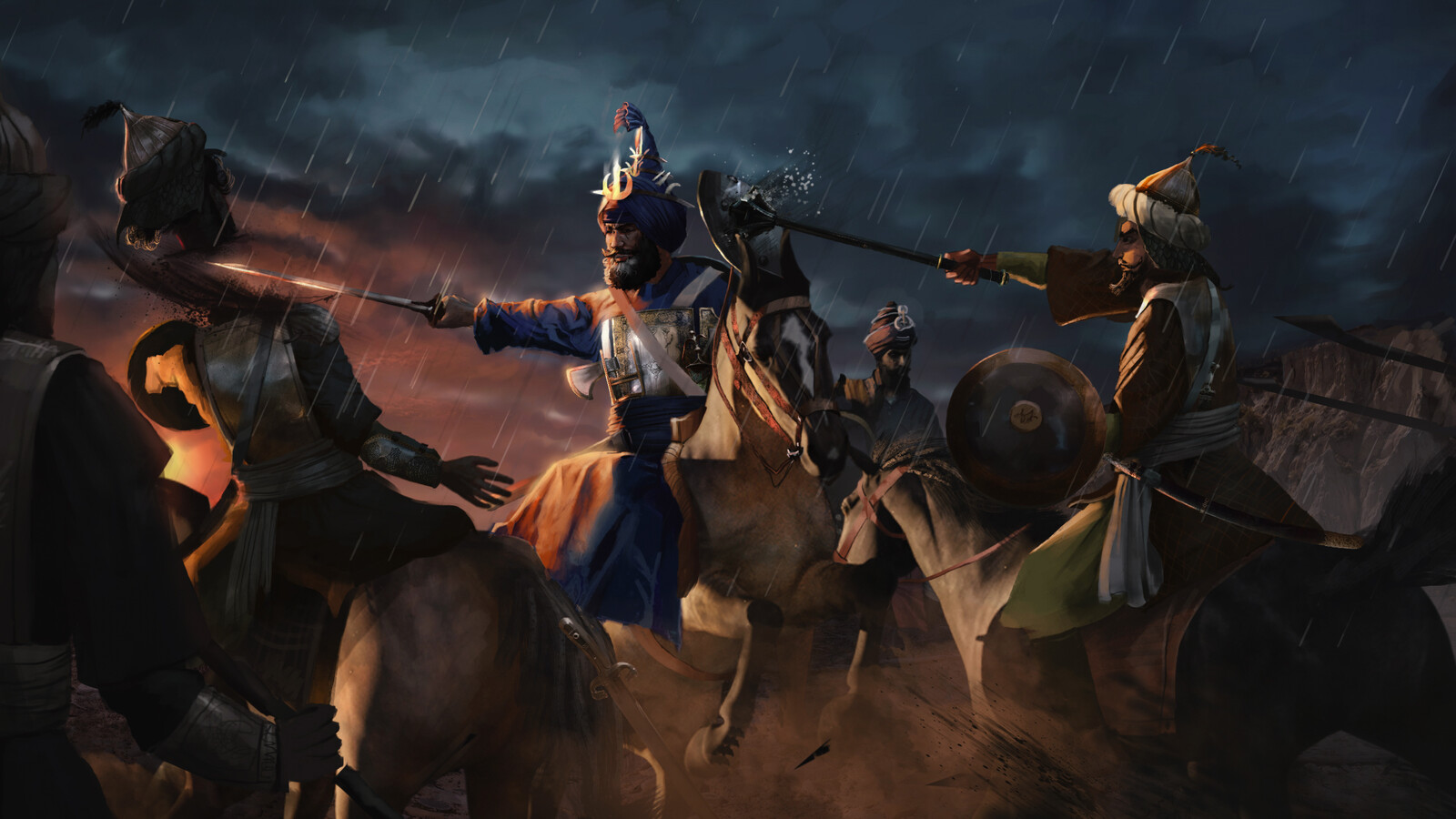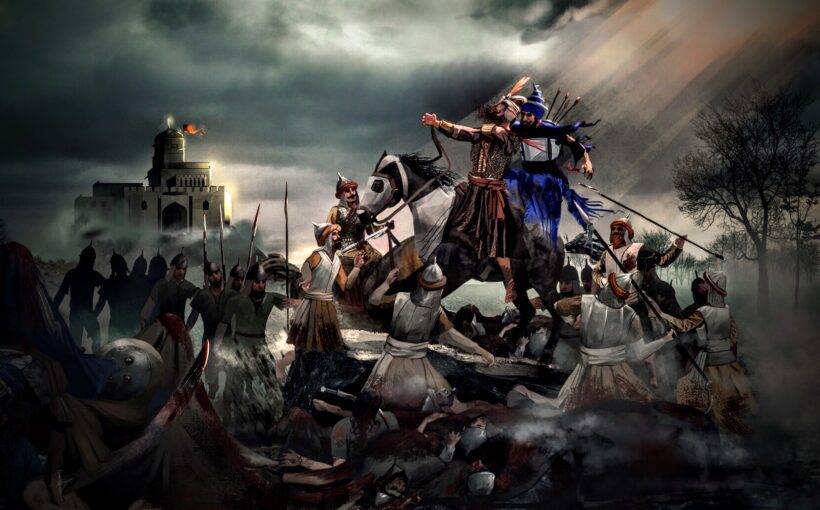‘Sava Lakh Se Ek Ladaun Tabhi Gobind Singh Naam Kahaun’.
Guru Gobind Singh Ji poetically described the ferocity of his 40 Sikh warriors in this saying that means “Call me Gobind Singh, only, when each of my Sikh will fight with more than one and a quarter lakh of enemy.”
We celebrate Christmas on 25 December but not many of us know that in the same week, from 21 to 23 December (1704) India witnessed a historic battle of epic proportion, in which Guru Gobind Singh Ji with his Two sons (Sahibzade) and 40 Sikh warriors collided against combined armies of 10,00,000 – Ten lakh Mughals and some smaller hill chieftains.
Battle of Chamkaur (also known as second battle of Chamkaur) taught Mughals ,that in battles number are not everything and it requires courage and motivation to fight for righteousness (Dharma).
The four sons of Guru Gobind Singh Ji were called the Chaar Shahibzade .
Content
Guru Gobind Singh Ji( 1675- 1708) and the establishment of Khalsa
Guru Gobind Singh (Gobind Rai) Ji was born on 5 January 1666 at Patna. He was the 10th and last Sikh guru who bravely fought against the tyranny of the Mughals.
He was a warrior, poet, philosopher, and a spiritual leader. On 29 march 1676 (Vaishakhi day) he became 10th guru of the Sikh community. His father and 9th Sikh guru Teg Bahadur Ji was mercilessly tortured to death by the Mughals. Guru Teg Bahadur sacrifice his life for Kashmiri Hindu Pundits that were being forcefully converted to Islam by Emperor Aurangzeb.

It was in 1699, when the tenth Guru of Sikhs, Guru Gobind Singh Ji established the Khalsa Panth.
To protect the innocent people and the Sikh-Hindu community from the oppression of the Mughals Guru Gobind Singh Ji founded the KHALSA (a warrior community) on 30 March 1699.The main aim of Khalsa was to fight against those who are committing atrocities on poor and helpless and for self defence.
He also initiated the 5 K’s tradition of the Khalsa
- Kesh: Uncut hair
- Kangha: A wooden comb
- Kara: An iron or steel bracelet worn on the wrist
- Kirpan: A sword or dagger
- Kacchera: Short Breeches
Background of The Batlle of Chamkaur
After the formation of Khalsa, the Sikhs were becoming a threat for the Mughals and hill chieftains. Although the Sikh never fought for wealth nor for gaining territories,Self defence and following the code of Dharma-yudh were the principles of the Khalsa army in warfare.
The Sikh under Guru Gobind Singh ji defeated the Mughals and the hill king in several battles but after the battle of Anandpur (1700) in which the Sikh defeated the Mughals, Mughals realize the military power of the Sikhs and under Aurangzeb they decided to finish the Sikh threat once and for all.
The Mughals along hill rajputs attacked Guru Gobind Singh at Sri Anandpur Sahib. The Mughals were able to cut the supply lines of the Sikh warriors and pressurized them to Surrender.
But the Khalsa army bravely repulsed every single attack from the invaders for almost 7 months.
Suffering from heavy casualties and from logistical problems ,the Mughals decided to send a proposal in the name of Emperor Aurangzeb to the Guru ,allowing a safe passage to all of his followers including women and children.
With supply lines being cut and having innocent children and women at the fort ,Guru agreed to take safe passage and leave Anandpur fort in December 1704.
But the Mughals along with the hill Rajas betrayed Guru Gobind Singh and broke their oath as they had always did and attacked Sikhs on the banks of river Sarsa.
Handful of Khalsa warriors decided to hold the enemy on the river bank and allowed their Guru to cross the river. Chaos ensued all over the place and many brave Sikh warriors attained martyrdom.
This heroic stand of the Khalsa warriors gave their Guru his two son Baba Ajit Singh, Baba Jujhar Singh. along with 40 warriors ,enough time to cross the river. But unfortunately the mother of Guru Gobind Singh (Mata Gujri) and two younger sons Sahibzada Zorawar Singh and Sahibzada Fateh Singh got separated from their family.
The two sons were caught by Wazir Khan. When the two Shahibzade refused to convert to islam ,Wazir khan then declared the two innocent children as the enemy of the Mughals and ordered them to be bricked alive, and a day after it they were executed such was the tyranny of the Mughals.

Sahibzada Zorawar Singh and Sahibzada Fateh Singh attained martyrdom at the age of 8 years and 6 years respectively.
On the other hand Guru Gobind Singh his two elder sons and 40 Sikhs camped inside a Haveli and declared war against the Mughals. This seemingly one sided battle for Mughals would turn into a bloodbath of Mughal soldiers in a way that they could not have predicted.
Main Battle: 40 against a million
An army of about 10,00,000 Mughals surrounded the haveli at Chamkaur. Initially they sent an offer to negotiate with the Sikhs, but Guru Gobind Singh refused and decided to fight till the end.
Guru Gobind Singh Ji divided his army of 40 brave warriors into small groups of 5-8 men each. The Khalsa warriors broke havoc on the Mughal lines and were able to inflict heavy casualty on the combined armies of the enemy.

After sometime Baba Ajit Singh ,who was only 17 decided to enter into the battlefield. He valiantly came out of fort along with 8 others soldiers which included one of the original Panj Piarey, Bhai Mokham Singh.
They fought valiantly and inflicted heavy losses on the Mughals. Guru Ji watched the battle from the top of the fort. One after the other the sikh warriors attained martyrdom and when Baba Ajit Singh attained Shaheedi, his younger brother asked the permission from his father to go into the battlefield.
Two Panj Piyare also went with Baba Jujhar Singh Ji. At the age of 14 when children don’t even know what to do, Baba Jujhar Singh Ji decided to sacrifice his life for righteousness (Dharma). He fought for 2 hours.
At last only around 10-12 Sikh soldiers remained inside the haveli. On 23 December ,the remaining Panj Piyare and Sikh soldires decided to invoke the oath of the Khalsa which makes it necessary for the Guru to consider the advice of his disciple and leave the fortress.
The remaining soldiers fought till their last breath and slaughtered the army of traitors and mlechhas.

On leaving Guru Gobind Singh Ji blew his horn and stood on high ground and clapped his hands three times saying “peer e hind rwad” ( the peer of india is leaving).
Salute to those sikh soldiers and Guru Gobind Singh Ji and his four Sahibzade !

Donate to our Cause
If you Support what we are doing and would like to contribute to help us grow and reach more Indians to teach them more about such forgotten historic Indian Heroes and stories, please consider donating any amount. It will help us grow


One comment